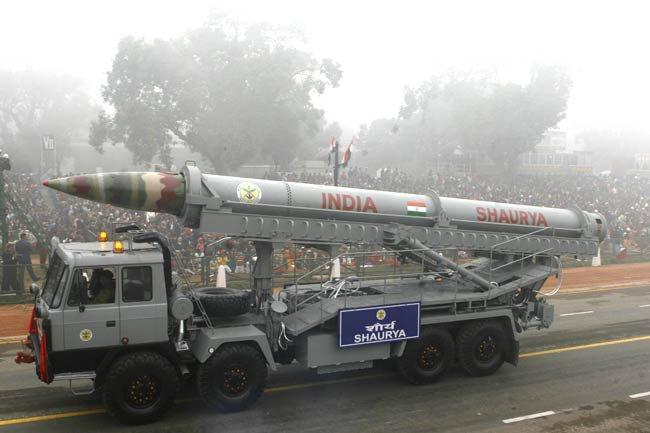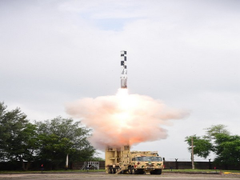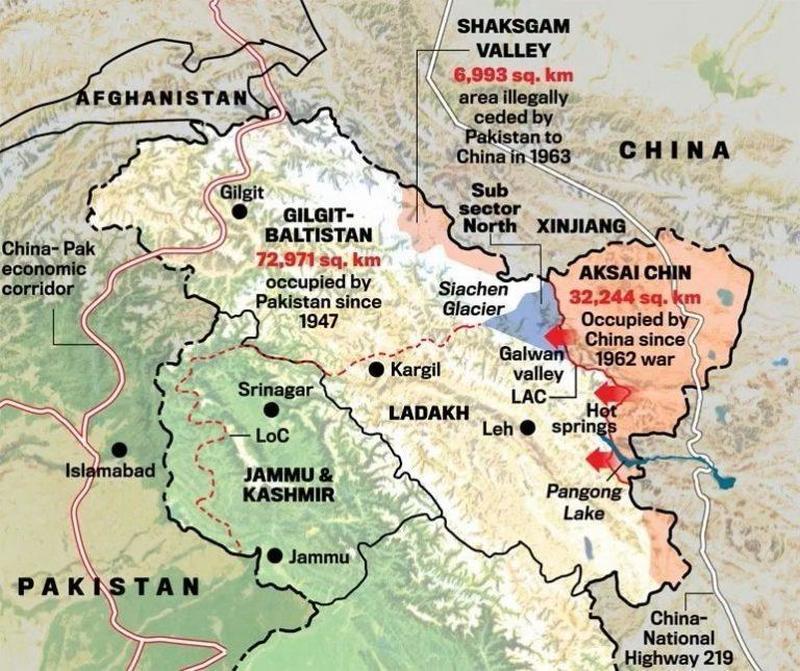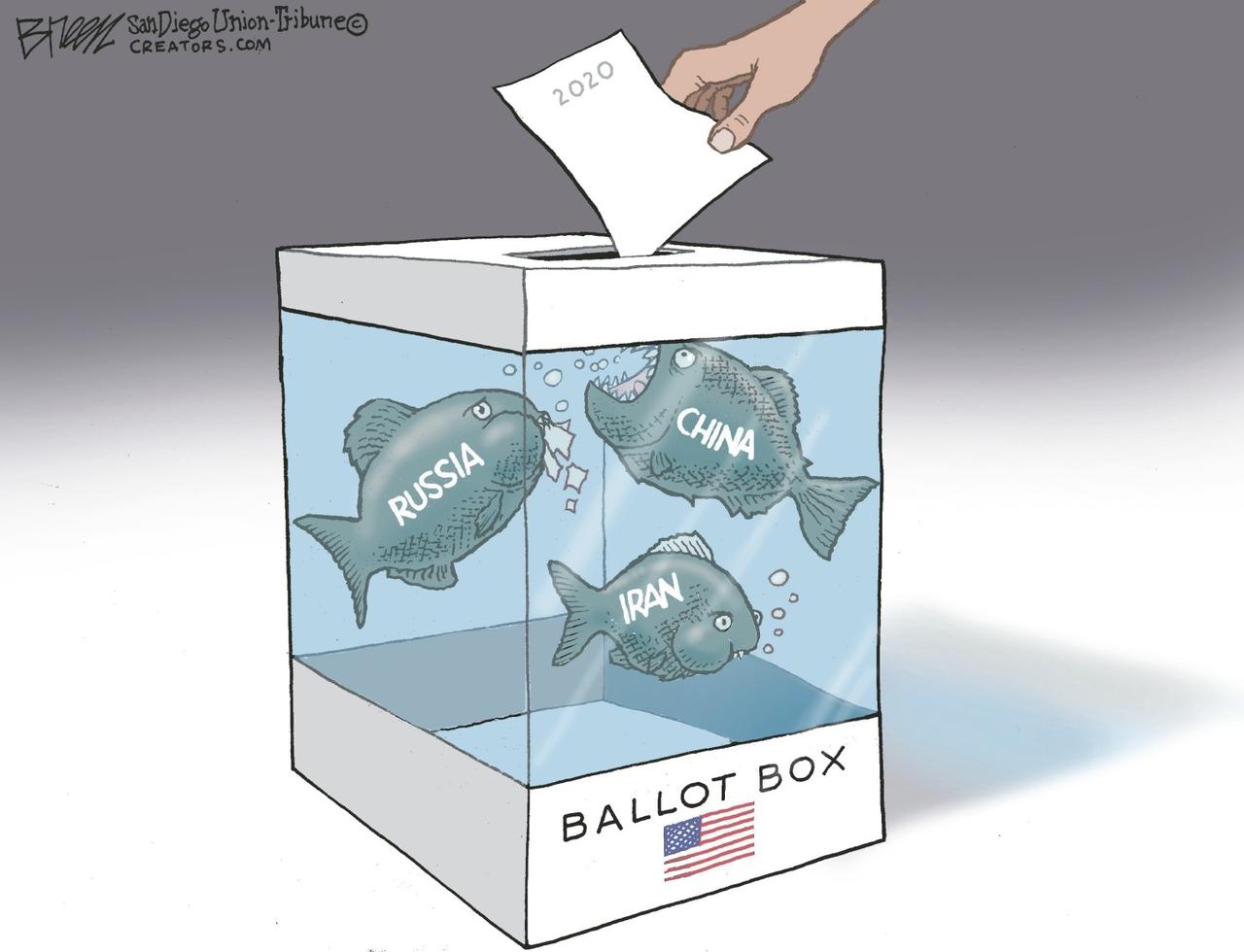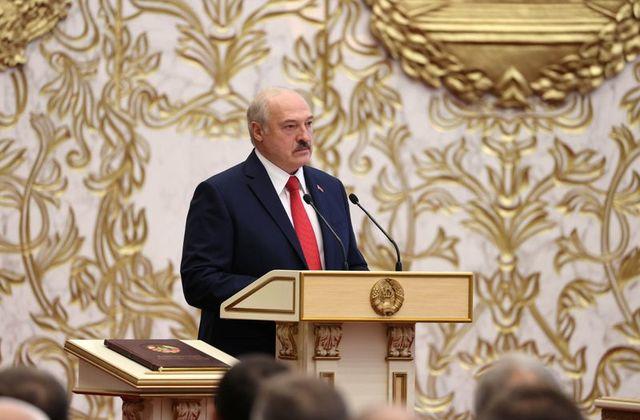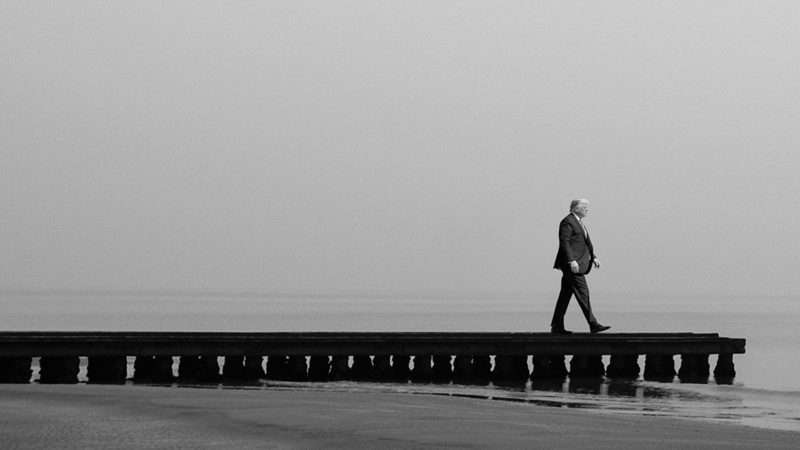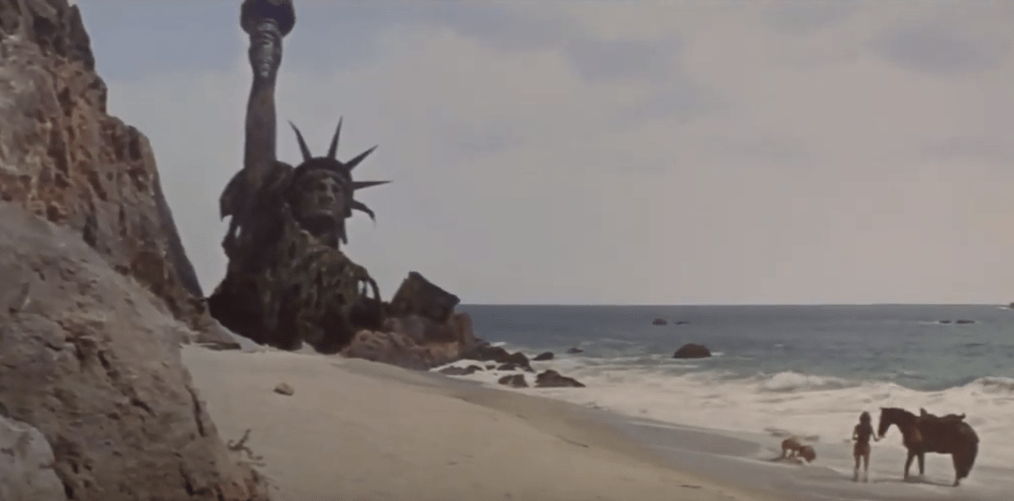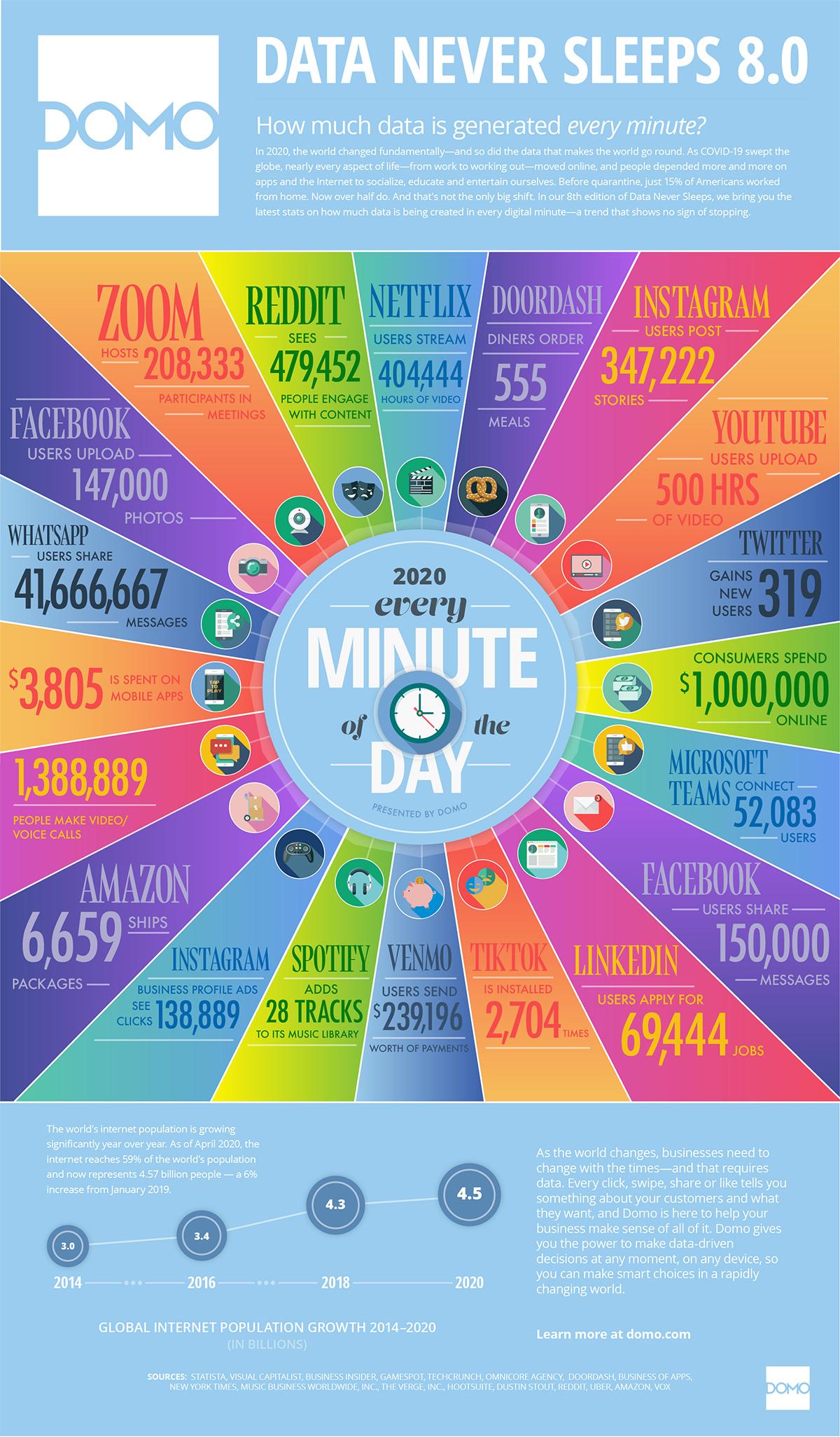We do not view Lyndon Johnson’s presidency through the lens of the Texan’s legendary vulgarity; the Great Society and Vietnam War loom much larger on his scorecard. Nor do we judge George Washington’s generalship by the Continental Army’s autumn 1776 squandering of New York—every leader of consequence has bad days or weeks in the face of unprecedented challenge.
So before assessing Donald Trump’s worthiness to receive a second term, let us set aside the two cudgels wielded most often by his media and Democratic tormentors: the 45th president’s polarizing personality, and his administration’s scattershot response to a once-in-a-century pandemic.
Focusing on Trump’s deeds, instead of words, from Inauguration Day until just before the first reported U.S. death from COVID-19 on February 29, is a clarifying, even liberating, exercise. At a time when so much of American discourse is about symbolism instead of policy, adjectives instead of nouns, feelings instead of facts, this approach waves away the toxic political fog and drills down into the bedrock of this presidency. What has the Manhattan real estate developer actually built in Washington; how has that already impacted the lives of his constituents; and what lasting changes are likely if his job performance is ratified by the voting public in November?
Working through those questions will produce different answers for everyone, but here’s a preview of mine: On the broad federal issues I care about most—limiting the size and scope of government, protecting individual liberties, allowing for peaceable exchange between willing partners, and contributing to international peace and human flourishing—Trump has been not just passively suboptimal but actively malign. Rewarding his record will cement bad policy and complete the Republican Party’s transformation into a vehicle for big-government nationalism that’s openly suspicious of free markets and perceived enemies.
The Trillion-Dollar Tax
“Keep your eye on one thing and one thing only: how much government is spending,” economist Milton Friedman famously said during the Carter administration. “Because that’s the true tax.”
Under Trump’s signature, even before the coronavirus, the sticker price on that annual levy was jacked up by almost $1 trillion.
The Constitution tasks Congress, not the president, with initiating all federal expenditures. The Budget Control Act of 1974 further instructs the legislature to pass a dozen specific appropriations each year by certain deadlines. The last time those deadlines were met was in 1994. This is a “broken system that Congress has created,” Rep. Justin Amash (L–Mich.) says.
Instead of budget deliberations with debates and amendments and votes, there are closed-door negotiations between House and Senate leadership that typically produce either last-minute continuing resolutions to keep the federal apparatus functioning or must-pass omnibus bills that no member has enough time to read. But if the core blame for our budgetary dysfunction rests squarely on the shoulders of those choosing to fritter away the legislative branch’s prerogatives, that should not let this or any president off the hook.
Congressional terror at making recorded votes on issues of potential controversy consciously offloads decision-making responsibility onto the executive. Which means that presidents have real power to shape legislative behavior. When asked in September 2019, for example, about taking up a gun bill that had been passed by the House of Representatives, Senate Majority Leader Mitch McConnell (R–Ky.) sounded more like a White House spokesman than the leader of a co-equal branch: “The administration is in the process of studying what they’re prepared to support, if anything.”
Republicans, of whom Trump is by far the country’s most popular within the party, held a majority in both chambers on Capitol Hill during his first two years of office. In the waning days of that 114th Congress, McConnell’s No. 2 in leadership, Sen. John Cornyn (R–Texas), was queried by reporters about the Senate’s approach to funding the federal government past a December 22, 2018, deadline. “I don’t know of a specific plan yet,” Cornyn said, just days before the lights went out. The legislative branch was waiting on appropriations instructions from the White House.
So what has Trump done with his considerable leverage to affect the level of federal expenditures? Sign a half-dozen continuing resolutions, plus a few longer-term omnibus deals, that together eliminated Obama-era spending caps, suspended the debt ceiling borrowing limit, and ratcheted up the size of government, all at the tail end of a historically long economic expansion and stock market bull run.
Federal spending under Barack Obama went from $2.98 trillion in George W. Bush’s last full fiscal year of 2008 to $3.52 trillion in the stimulus-weighted fiscal year of 2009, an increase for which Obama and the Democratic-controlled 111th Congress deserve the lion’s share of responsibility. Since the 44th president’s last full fiscal year of 2016 saw expenditures of $3.85 trillion, we can say that during his two terms of office—which included a major federal response to an economic crisis—annual spending went up by around $900 billion.
Trump matched that increase in just one term, before his own crisis hit.
Fiscal 2017 featured spending of $3.98 trillion, with most of the $140 billion increase over the previous year coming under Trump’s sharpie. Then things really took off—$4.11 trillion in 2018, $4.45 trillion in 2019, and a whopping $4.79 trillion destination at the halfway point of fiscal 2020. And then came the pandemic.
Discretionary spending—meaning that part of the budget (roughly one-third) requiring explicit congressional approval, as opposed to “mandatory” items such as Social Security, Medicare, and Medicaid—never topped $1.2 trillion during Obama’s second term. Trump’s wholly owned, pre-virus budgets saw the discretionary portions rise from $1.28 trillion to $1.36 trillion to $1.44 trillion.
Congressional Republicans, who had put the budgetary screws on Obama as soon as they won a House majority in January 2011, lost their appetite for hardball the moment the GOP regained control of the Senate four years later. Trump in 2015–16 then ran and won handily on the least fiscally conservative platform of a crowded presidential primary field, serially mocking the entitlement-reform mantras mouthed by a generation of fiscal conservatives. “We’re going to save your Social Security without killing it, like so many people want to do,” he vowed at a June 2016 rally. “And your Medicare.”
The reason that Republicans and Democrats alike (if not quite in equal measures) spent decades before 2015 talking about the need to restructure the country’s old-age transfer programs is that, as the historically large baby boom generation shifts from contributor to recipient, these programs are on an inexorable trajectory toward insolvency. In 1950 there were 16.5 workers paying into Social Security for every one retiree receiving benefits; in 2019 that ratio was just 2.9 to 1. In an annual report finished just prior to the pandemic, the Social Security Administration Trustees projected that the trust fund, if politicians continued doing nothing, would be forced to enact automatic, across-the-board cuts to recipients beginning in 2035.
Yet doing nothing has been Trump’s intention all along. In March 2017, Robert Draper of The New York Times Magazine suggested to the president that conservatives should not expect entitlement reform during his first term. “I think you’re right,” Trump accurately forecasted, before pivoting to the virtues of government spending: “We’re also going to prime the pump. You know what I mean by ‘prime the pump’? In order to get [the economy] going, and going big league, and having the jobs coming in…we’re going to have to prime the pump to some extent. In other words: Spend money to make a lot more money in the future. And that’ll happen.” You can’t say he didn’t warn us.
The president did flex his muscles on two notable occasions during congressional budget negotiations, each leading to government shutdowns. But that wasn’t because Congress was spending too much—it was because lawmakers were spending too little for his liking on immigration enforcement.
Conservatism during Obama’s first term was all about blocking Obamacare, forcing conversations about entitlement solvency, and raising the alarm over trillion-dollar budget deficits. Republicans in Trump’s first term have failed to reform Obamacare, sidestepped conversations about long-term fiscal sustainability, and brought trillion-dollar deficits roaring back.
In December 2018, when there were still at least some advisers inside the White House mouthing concerns about a future debt crisis, the president reportedly dismissed them by saying, “Yeah, but I won’t be here.” There is only one sure way to make that prediction come true.
Industrial Policy Making
Donald Trump in 2016 became the first GOP presidential candidate to successfully campaign on trade protectionism since Herbert Hoover. And though he doesn’t have a Smoot-Hawley tariff on his ledger, the president has made consumer goods more expensive, export markets more difficult to access, and government subsidization of industrial sectors more likely, both here and abroad.
Republicans during the Obama presidency made great hay, and rightly so, over the $11.3 billion the federal government lost in its post–financial crisis takeover and restructuring of General Motors. Trump’s trade wars have topped that number three years running on agriculture bailouts alone—$12 billion to compensate for the retaliatory clampdowns on export-market access in 2018, $16 billion in 2019, and $19 billion in 2020 pre-COVID.
“We now have a huge $20 billion-plus farm subsidy program that most experts are worried is never going to disappear,” says trade lawyer and Cato Institute analyst Scott Lincicome. “There’s nothing so permanent as a temporary government program. That old Milton Friedman line is certainly true in the case of farm subsidies.”
The president has expanded the latitude for his successors and America’s trade partners alike to use bogus justifications for erecting tariffs. In March 2018, Trump exercised the little-used Section 232 national security exemption to the 1962 Trade Expansion Act in order to enact a 25 percent tariff on imported steel and a 10 percent tariff on aluminum. This despite the fact that his own military rejected the security argument, that six of the top 10 foreign suppliers of steel are NATO allies, and that two months later the president himself tweeted that the tariffs were in response to a Canadian tariff on dairy products.
“For decades, presidents, and governments in general around the world, were extremely hesitant to invoke national security in order to achieve economic protectionism for really not national-security-related grounds,” Lincicome says. “The Trump administration has really opened Pandora’s Box with respect to Section 232.”
The move “has provided future administrations a really easy way to unilaterally implement certain policies,” Lincicome continues. “So, for example, you could quite easily see a Biden administration determining that climate change is a national security threat and thus imposing national security tariffs on imports from countries that don’t sign under the Paris agreement.” With courts generally deferential to the executive branch’s national security claims (and with Congress dispositionally unwilling to take on the president), future trade wars now have a template.
As predicted by the vast majority of trade economists, Trump’s tariffs have failed in their stated intent to prop up domestic producers and jobs, triggered reciprocal actions that have punished American exporters, and created a cottage industry of lobbying in Washington for exemptions.
Trump campaigned against the seven-decade Washington-led international system of mutual tariff reduction without ever having a coherent plan to replace it. His promised bilateral trade deals have mostly failed to materialize; other countries and blocs are now signing pacts that freeze out American producers; and the dispute-resolution body at the World Trade Organization (WTO), which has historically proven favorable to U.S. claims, has ground to a halt because of Trump’s unwillingness to appoint representatives.
Sen. Josh Hawley (R–Mo.) and his allies like to say “we should get out of the WTO” and “replace it with something that doesn’t kowtow to China,” Lincicome says. “The problem is, [Trump has] done none of that. Instead, it’s all just might-makes-right unilateralism.”
The president’s troubled negotiations with China, in addition to materially harming U.S. consumers and producers, have by his own admission discouraged him at several key moments from speaking out about the communist country’s human rights atrocities against its Uighur population and its ongoing crackdown against Hong Kong. Now that talks have broken down in an election year, the administration is ratcheting up its aggressiveness, including through an August executive order to kick out the Chinese-owned social media video giant TikTok within 45 days.
The president’s trade record and hands-on approach to industrial policy threaten to overrun one of the best aspects of his first term—his conscious, system-wide slowdown of the ever-expanding administrative state.
“Trump’s regulatory streamlining,” the Competitive Enterprise Institute stated in May in its annual regulations survey The Ten Thousand Commandments, “is being offset by his own favorable comments and explicit actions toward regulatory intervention in the following areas: Antitrust intervention, financial regulation, hospital and pharmaceutical price transparency mandates and price controls, speech and social media regulation, tech regulation, digital taxes, bipartisan large-scale infrastructure spending with regulatory effects, trade restrictions, farming and agriculture, subsidies with regulatory effect, telecommunications regulation, including for 5G infrastructure; personal liberties: health-tracking, vaping, supplements, and firearms; industrial policy or market socialist funding mechanisms (in scientific research, artificial intelligence, and a Space Force), [and] welfare and labor regulations.”
Trump’s shocking win in 2016, particularly in an industrial Midwest that Democrat Hillary Clinton barely visited, may have led political commentators to overcorrect for their previous blind spots by convincing themselves voters were against free trade. In fact, public approval of international trade has reached record polling highs during Trump’s first term. The president is once again campaigning to the left of the Democratic nominee on tariffs; another victory would likely turn a decisive majority of the political class against the single greatest global anti-poverty measure ever invented.
Immigration Cruelty
On his eighth day in office, Trump signed an executive order asserting that “whenever the President finds that the entry of any aliens or of any class of aliens into the United States would be detrimental to the interests of the United States, he may by proclamation, and for such period as he shall deem necessary, suspend the entry of all aliens or any class of aliens as immigrants or nonimmigrants, or impose on the entry of aliens any restrictions he may deem to be appropriate.”
First up for suspension were all travelers—including, during the first 48 hours, a half-million legal U.S. permanent residents—from Syria, Iran, Iraq, Sudan, Libya, Somalia, and Yemen, plus any refugee from anywhere on earth. College students, green-card holders, and people who had finally gained admission after years of waiting for permission boarded flights under one set of conditions, only to discover upon landing in an American city that the rulebook had changed and they had to turn back. The move caused chaos and anguish at airports and in immigrant communities all over the country.
The travel ban was challenged and rewritten several times, but in 2018’s 5–4 Trump v. Hawaii decision, the Supreme Court codified the chief executive’s power to select which foreigners can and cannot enter the country, including based on factors (such as religion or political beliefs) that if applied to legal U.S. residents would be deemed unconstitutional.
Though Trump emphasized cracking down on illegal immigration during the 2016 campaign, in fact his deportation numbers pale in comparison to Barack Obama’s. Instead, his “biggest contribution” has been restricting the legal variety, according to Cato Institute immigration policy analyst David Bier. “We’re talking about just an incredible number of actions to reduce legal immigration,” he says. Beginning, most ungenerously, with refugees.
Fueled by grisly wars in the Middle East and Africa, the global population of refugees doubled between 2012 and 2017, from 10 million to 20 million, a historically high level where it has remained ever since. The incoming president, having won on the most restrictionist platform since World War II–era Franklin Roosevelt, promptly slashed America’s refugee intake to historic lows—22,000 in fiscal year 2018, down from 85,000 in 2016.
The last time worldwide refugees doubled in so short a span, in the late 1970s and early 1980s, presidents Jimmy Carter and Ronald Reagan took lead roles in organizing the global response, and America welcomed into the country roughly 1 out of every 70 refugees—from Vietnam, Cambodia, the Soviet Union, Iran, Cuba, and so forth. Under Trump, the U.S. has withdrawn from anything like leadership of the free-world response, and its refugee intake is more like 1 out of every 900.
Though the Trump administration had already reduced just about every category of legal immigration, some of the most significant restrictions went into effect only this year. The new “public charge” rule, wherein applicants for visas are required to prove that they’ll never go on welfare, will precipitate massive reductions in by far the most common type of immigration: the family-sponsored visa, which traditionally has accounted for six out of every seven legal immigrants to the United States.
“This rule basically makes it impossible to get around it if you’re poor and you don’t have a college degree,” Bier says. “We’re forcibly separating U.S. citizens from their spouses, from their parents….It is something [that], if it was imposed on any other U.S. citizen, would be considered an affront to liberty and an imposition that we wouldn’t tolerate for a second if the spouse was born in the United States or a parent was born in the United States.”
Trump has changed asylum rules so that even those with ironclad cases of being persecuted back home will be automatically returned there if they enter America via a third country. Asylum seekers who arrive at ports of entry to make their cases are now routinely turned away instead of processed. The number of foreign college students has been chopped down. And most shockingly, in numbers never before seen, the White House made a conscious policy to separate minor children from their asylum-seeking parents.
“This was an intentional effort by the Trump administration to target parents with children,” Bier says. “And not based on any kind of risk factor or criminal history or prior crossings or anything. It was, ‘If you’re a parent and you are crossing with a kid, we’re going to target you for prosecution specifically.’…The zero-tolerance justification was just a facade to justify what they wanted to do, which was terrify these asylum seekers into not coming, basically.”
Even more than trade, immigration was a signature Trump campaign issue in 2016, and it’s been a focus of his attention in the Oval Office. If you believe it humane for U.S. citizens to be able to import their foreign-born immediate family, or for children to not be separated from their parents, or for America to extend a helping hand to the world’s wretched, or for deserving asylum seekers to be able to make their cases, then Donald Trump is anathema to your values. Like trade, immigration has on balance contributed to the wealth of America and lifted tens of millions of people out of poverty. The president’s opposition to the free movement of people from countries he disfavors will, if he receives another term, be translated into policy that actively harms millions of U.S. citizens, for many years to come.
Crisis Management
In considering Trump’s presidency through February 2020, it is fair to ask what he did to prepare for a crisis such as the one now crippling the country. Because no matter what or when or how, the crisis always comes.
Here the president’s erratic temperament comes into play. He has proven an alienating figure in the international arena, repeatedly insulting America’s traditional allies while cultivating a more dodgy and less powerful band of cronies in places like Hungary and Saudi Arabia. Pandemics require urgent global cooperation; instead the president has spent precious time dubbing COVID-19 the “China virus” and doubling down on supply chain–damaging trade wars.
“Let’s face it—we’ve pissed off almost every other country in the world at a time when global collaboration for a vaccine or a cure is most needed,” Lincicome says. “And that type of action has consequences. If a vaccine is developed outside of the United States, and it’s developed in a country with which we’ve had pretty hostile trade and economic relations, will Americans be disadvantaged in terms of access?”
Economic crises are like margin calls, exposing where governments have left themselves out of position and creating sharp new demands for government services even as the tax base dwindles. Trump inherited a growing economy, a bullish market, a massive debt burden, and a certain future implosion of the old-age entitlement programs. Instead of saving for the inevitable rainy day, the president primed the pump, ran deficits back over $1 trillion, and put the country in a historically vulnerable position to make the biggest economic policy gamble—and commitment—since the New Deal.
Meanwhile, his preexisting management style—demanding private loyalty and public flattery from his ever-revolving Cabinet, personalizing policy responses and entire federal departments, contradicting himself and the available facts on a daily basis—has shown itself to be a tangible governing handicap. The first rule of pandemic crisis response is that public officials must be sane, sober, and truthful in communicating with the public. Trump did not build his remarkable career around these traits.
Republican voters will flatter themselves this fall by imagining that they’re striking a blow against socialism and doddering old men. And it’s true: The Democrat in this race looks a few cards short of a full deck while sitting atop a party desperate to fulfill generations’ worth of big-government fantasies.
But we don’t need to conjure up an erratic authoritarian to fight off. He’s sitting right there in the Oval Office.

from Latest – Reason.com https://ift.tt/33tQj56
via IFTTT
